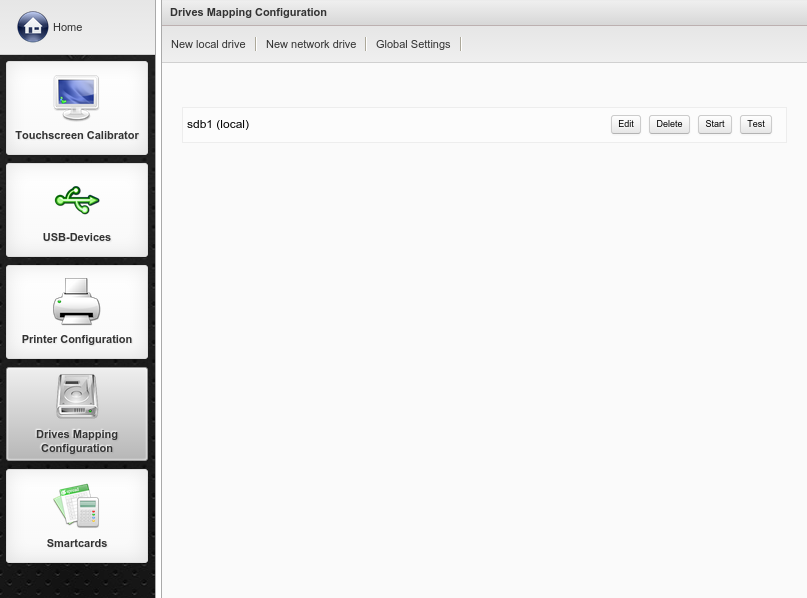With the option Rangee Linux offers the possibility to connect network or local drives.
After clicking the -button you are able to make changes on drive handling.
Network drives can be added with a click on .
You can add local drives by clicking the button.
Local drives will only show up if the option in the is deactivated and if drives
were added via new local drive. Supported are USB drives, USB floppys, CD-ROM drives or USB sticks. Rangee cannot guarantee
that all USB extensions are working without restrictions. To choose the right and compatible model Rangee Support gladly helps.
Local drives will only show up if the option in the is deactivated and if drives
were added via new local drive. Supported are USB drives, USB floppys, CD-ROM drives or USB sticks. Rangee cannot guarantee
that all USB extensions are working without restrictions. To choose the right and compatible model Rangee Support gladly helps.
If you have added a drive successfully it will appear with the chosen name.
You have now several options:
You have now several options:
- : You can edit the settings of the drive.
- : If you do not need the drive anymore you can delete it with this button.
- : To be able to use this drive for ICA- or RDP-connections choose . deactives the use.
- : If there are any files on the drive you can click to list them up. Note that the drive has to be configured the right wayand you have to press on before.




